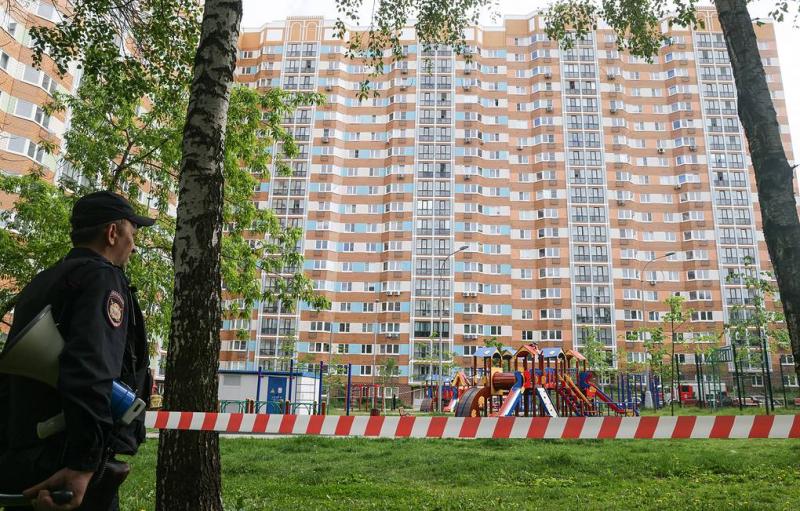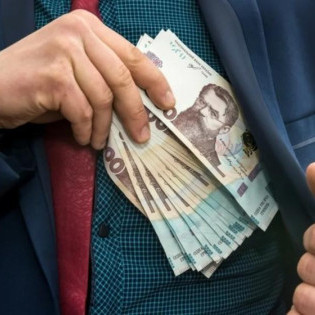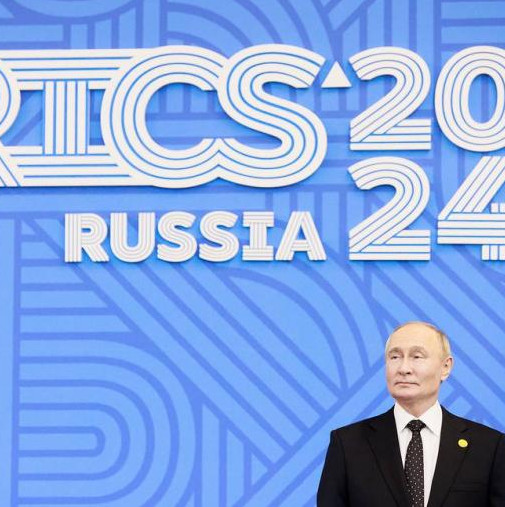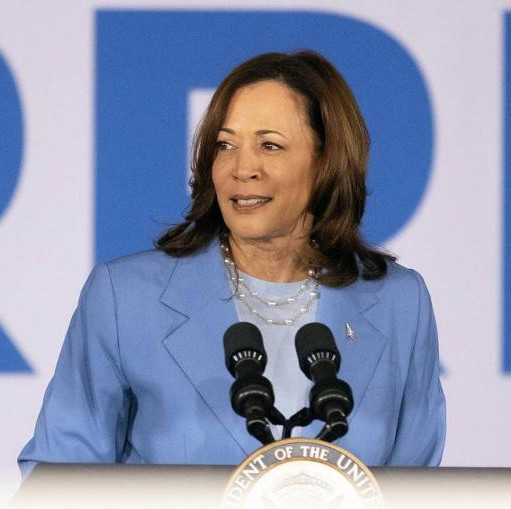
© Alexander Shcherbak/TASS
Top stories from the Russian press on Wednesday, May 31st, prepared by TASS
Ukrainian drones attack Moscow, suburbs; Belgrade, Pristina far from reaching compromise; and Russia’s top diplomat continues his tour of African nations. These stories topped Wednesday’s newspaper headlines across Russia.
Rossiyskaya Gazeta: Russia deflects Ukrainian drone attack on Moscow, suburbs
Early on Tuesday, May 30, a terrorist attack was committed against Russia’s capital city and surrounding suburbs. Drones attempted to strike targets in Moscow. Thanks to the capital’s air defense system, however, serious consequences from the attack were avoided. The strike involved eight fixed-wing unmanned aerial vehicles; all of them were downed.
Colonel Timur Syrtlanov, member of the presidium of the Officers of Russia organization, told Rossiyskaya Gazeta: "First of all, I would like to note that this was bound to happen sooner or later. Especially given the fact that our drones have been attacking Kiev for the past 24 hours. So, a counter response was expected. The only substantial difference is that the Russian drones are targeting exclusively military facilities while the Ukrainian Nazi regime is launching their drones at civilian targets, because their goal is different - they want to sow panic among Russians. Yet, they have not succeeded and they will not succeed."
Military expert Anatoly Matviychuk said: "Of course, with this terror attack the Kiev regime is trying to put the Russian civilian population on edge and scare them. And, yet again, they have sparked a media firestorm. Now they will try to spread reports that Moscow and the surrounding region are defenseless against such attacks."
Vladislav Shurygin of the Izborsky Club think tank noted that this is yet another operation masterminded by the Main Directorate of Intelligence of the Ukrainian Ministry of Defense (GUR), using its agents on Russian soil. "There is no information indicating that the drones were launched in Ukraine. I think that, in that case, they would have been detected earlier. Here, they were spotted in the Moscow Region. Unidentified drones were spotted in the Moscow Region in the springtime. And, on the eve of the May 9 parade, two drones reached the Kremlin. This demonstrates that the GUR is methodically probing for ways to attack Moscow. The following conclusions can be drawn: A network of saboteurs run by Ukrainian intelligence is active in Moscow and the Moscow Region as well as in the surrounding regions. Additionally, this means that the saboteurs still have opportunities to bring weapons and explosives onto our territory. Our special services need to flush out and destroy the enemy agents," the expert concluded.
Izvestia: Is compromise between Belgrade, Pristina possible?
On May 30, Serbian President Alexander Vucic met with the ambassadors of the Quinta countries (the United Kingdom, Germany, Italy, the United States, and France) and criticized the international community’s attitude toward Pristina’s unilateral actions that triggered clashes between the Kosovo police and Serbs in northern Kosovo and Metohija. Vucic also met with the ambassadors of China and Russia, which, as Serbian lawmaker Milos Bandjur told Izvestia, can be viewed as a symbolic step showing that Belgrade has heavyweight supporters. However, the situation is far from being settled and, so far, the sides are not inclined to reach a compromise.
Kosovo’s goal may significantly differ from a simple settlement via mutual agreements, says Milan Lazovic, program coordinator at the Russian International Affairs Council.
"It’s by far not the first time that we are seeing similar attempts by Kosovo’s power structures and they all have the same goal - to push the Serbs out of the region. The Kosovo side does not want to fulfill the agreements that it has repeatedly vowed to implement, namely, the creation of a community of Serb municipalities [granting partial autonomy to Serb communities in Kosovo as provided for in the 2013 Brussels Agreement]. Now Kosovo is trying to resolve this issue by force," the expert told Izvestia.
That said, if armed clashes do break out, currently it is more advantageous for Belgrade for such a scenario to unfold as late as possible, says Yekaterina Entina, associate professor at the Higher School of Economics (HSE University) and senior researcher at the Russian Academy of Sciences’ Institute of Europe.
"The fact that, as of now, a decision has been made to deploy additional KFOR forces, the number of which has already been increased over the past year, with increased supplies, indicates that the situation is unlikely to morph into a serious escalation. That said, it is obvious that violence against the Serbs and individual clashes will only intensify. This has been happening for the past three years rather intensively, and since the onset of the Russian special operation in Ukraine has become a regular occurrence," the expert said.
Nezavisimaya Gazeta: Russia seeks understanding, bolsters ties in Africa
Russian Foreign Minister Sergey Lavrov is on his third tour of African countries this year. The top Russian diplomat has never visited the region so frequently before. However, the current situation demands it as the Russia-Africa summit is slated to be held in St. Petersburg in July, while Johannesburg will host a meeting of BRICS (Brazil, Russia, India, China, South Africa) leaders in August.
"In general, right now, [preparatory] work is underway for holding the African summit and it is critical for Russia to have as many participants as possible attend. The attendance of a delegation from Kenya would be most welcome. This is the case even given that the country has been under Western pressure for quite a while and is currently experiencing a certain level of pressure from the US. Russian companies have a presence in Kenya, and there are also connections in the area of communications and projects involving agricultural technologies. However, [Kenya] does not offer much in terms of mineral resources," says Leonid Fituni, deputy director of the Russian Academy of Sciences’ Institute for African Studies.
On Tuesday, Lavrov arrived in nearby Burundi. The country’s foreign minister, Albert Shingiro, termed the top Russian diplomat’s visit to the landlocked East African country as historic. In turn, his Russian counterpart gave a high appraisal of bilateral negotiations between the two countries in a number of areas and said that an agreement on peaceful nuclear development was in the final stages of coordination. Burundi plans to build its first nuclear power plant with Russia’s help. Given the country’s critically low level of electrification, this project is very important.
The expert told Nezavisimaya Gazeta that Burundi, being a poor country even by African standards, has a strategically important location on the continent. "Burundi is a connecting logistics hub. This potential has not been used by Russia to its full extent," Fituni reiterated.
Nezavisimaya Gazeta: Beijing getting on Pentagon’s nerves
The traditional Shangri-La Dialogue security summit will kick off in Singapore on June 2. The event is usually attended by high-ranking military officials representing countries across the Asia-Pacific Region and even Europe. However, this time, the main intrigue is a potential meeting between Chinese Defense Minister Li Shangfu and US Defense Secretary Lloyd Austin. Washington has repeatedly stated that it aspires to renew interaction at the ministerial level while Beijing, in turn, has insisted that no meeting would take place until the sanctions imposed on Li were lifted. The top Chinese military official is under US sanctions for facilitating the sale of Russian fighter jets and S-400 systems to China.
In a conversation with Nezavisimaya Gazeta, Alexander Lukin, research director of the Russian Academy of Sciences’ Institute of China and Contemporary Asia, noted: "Perhaps, they will meet as if by accident in a corridor. I don’t think that the Chinese will go for an official meeting. It is also unclear what they could talk about. The Americans would want to talk about Ukraine. But, that wouldn’t be of interest to the Chinese because the Americans would demand that China try to influence Russia. The Chinese would reply that peace is impossible if Ukraine doesn’t make certain concessions to Russia. Although, in principle, China is not proposing any specific terms. It can only [be a go-between to] assist the two countries in the process of reaching an agreement."
Pavel Kamennov, a Russian expert on China, said that the lack of interaction between the US and Chinese military in Singapore will not have any drastic consequences. "China is interested in developing trade ties with Europe and normalizing such ties with the US. This holds China back from using its armed forces except in critical situations. As for the red lines around Taiwan, there China is taking a whole series of steps in the areas of business and culture. And this is an area where it has succeeded. Here are two figures [to keep in mind]: The trading volume between Russia and China has reached $190 bln, while with Taiwan it has been about $200 bln for several years already. So, Beijing would want to avoid any conflict."
Izvestia: Russian forex futures trading in rupees, dirhams surpasses $24 mln in value
The trade turnover in futures for UAE dirhams and Indian rupees has surpassed 2 bln rubles (over $24 mln) since April 4, the Moscow Exchange’s press service told Izvestia. Russian businesspeople need these currencies to do business with their new partners. Experts note that, so far, these figures are rather modest, but there is potential for growth: Trading volumes with India and the UAE in 2022 amounted to $40 bln and $9 bln, respectively.
This is not a bad result for what are rather local, exotic currencies, but it cannot be compared to such mainstays as the dollar, euro or yuan, notes Finam analyst Andrey Maslov. The dirham’s unquestionable leadership is explained by it being tied to the dollar, he explains. Also, under the conditions of sanctions, the UAE is becoming an increasingly important partner for Russia in the area of goods and services.
"Many companies have opened offices in the Emirates and continue to do business with Russia. In turn, India is boosting supplies of Russian oil but is paying for them in dollars as well," the expert explained.
Another reason the dirham is popular is that its futures can be used to hedge against foreign currency exposure, says Vladimir Evstifeyev, head of the research department at Zenit Bank. This is relevant for those companies involved in foreign trade. In any case, they have to keep their funds in foreign currencies and the dirham’s exchange rate is rather stable. In the expert’s opinion, in the future it may become an alternative for domestic saving accounts.
"Among the drawbacks of investing in dirhams and rupees is that their liquidity is not very high. That said, the Indian currency, as opposed to the UAE’s, is not freely convertible. So, there won’t be a high commission fee with exchanging dirhams for rubles," says Freedom Finance Global analyst Vladimir Chernov.









